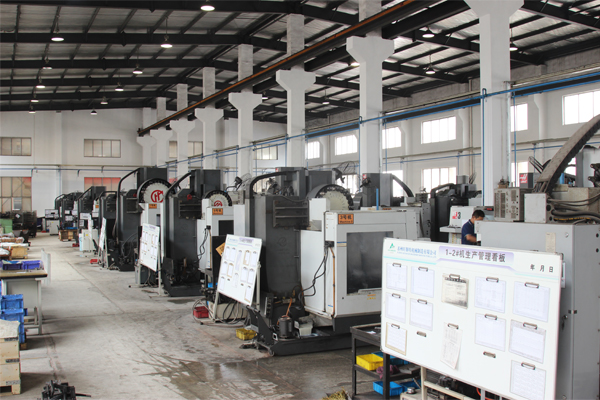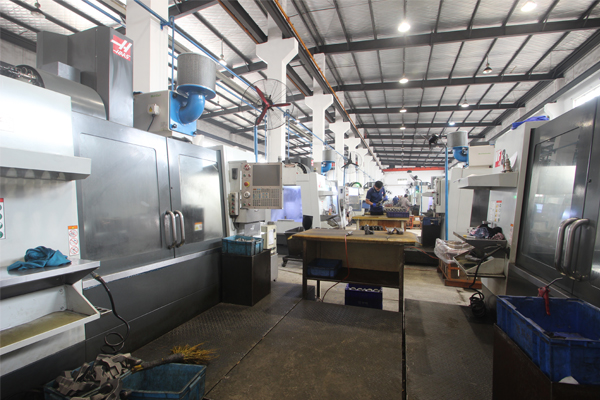The properties of die materials are determined by the composition of die materials and the structure after heat treatment. The basic structure of die steel is composed of martensite matrix, carbides and intermetallic compounds distributed on the matrix.
The performance of die steel should satisfy the performance of a certain die to complete the rated workload. However, the requirements for die performance are different due to the different working conditions and the rated workload index of all kinds of dies. Because the chemical composition and structure of different steels have different effects on various properties, it is impossible to obtain the optimum values of various properties at the same time even for the same grade steels. Generally, the improvement of some properties will lose other properties. Therefore, die workers often choose die steel and the best treatment process according to the working conditions and quota requirements of the die, so as to achieve the best main performance, while the other performance loss is minimal.
The performance requirements for various die steels mainly include hardness, strength, plasticity and toughness.
Mechanical Property Requirements of Dies--Hardness
Hardness characterizes the resistance of steel to deformation and contact stress. Hardness test sample is easy to prepare, workshop and laboratory are generally equipped with hardness tester, therefore, hardness is a kind of performance that is easy to measure, and hardness and strength also have a certain relationship, through the conversion of hardness and strength to obtain the material hardness value. Types of dies defined by hardness range, such as high hardness (52-60HRC), are generally used for cold working dies, medium hardness (40-52HRC), and hot working dies.
The hardness of steel is closely related to its composition and structure. A wide range of hardness can be obtained by heat treatment. For example, the hardness of the new die steel 012Al and CG-2 can be 60-62HRC after low temperature tempering and 50-52HRC after high temperature tempering respectively, so they can be used to make cold and hot working dies with different hardness requirements. Therefore, this kind of die steel can be called cold-working and hot-working die steel.
In addition to martensite matrix, there are other phases with higher hardness in die steel, such as carbides and intermetallic compounds. Table L shows the hardness values of common carbides and alloy phases.
Phase hardness HV
Ferrite is about 100
Martensite: ω C 0.2% about 530
Martensite:ω C 0.4% about 560
Martensite:ω C 0.6% about 920
Martensite:ω C 0.8% about 980
Cementite (Fe 3 C) 850~1100
Nitrides 1000~3000
Intermetallic Compounds 500
The hardness of die steel mainly depends on the dissolved carbon content (or nitrogen content) in martensite, and the carbon content in martensite depends on the austenitizing temperature and time. With the increase of temperature and time, the hardness of martensite increases with the increase of carbon content in martensite, but the austenite grain increases with the increase of quenching heating temperature, and the retained austenite increases after quenching, and the hardness decreases. Therefore, in order to select the optimum quenching temperature, the quenching temperature-grain size-hardness curve of the steel is usually made first.
Carbon content in martensite is related to alloying degree of steel to a certain extent, especially when tempered. With the increase of tempering temperature, the carbon content in martensite decreases. However, the higher the alloy content in steel, the more obvious the secondary hardening effect and the higher the peak hardening value occur due to the breakout of the alloy carbides and the transformation of retained austenite to martensite.
Mechanical Property Requirement of Die--Plasticity
Hardened die steel has poor plasticity, especially cold-formed die steel, brittle fracture occurs when plastic deformation is very small. To measure the plasticity of die steel, two indexes, elongation after break and section shrinkage, are usually used.
The elongation after breaking is the relative percentage of the increase of the length of tensile specimens after breaking, expressed in delta. The greater the elongation delta value after fracture, the better the plasticity of steel. The plasticity of hot die steel is obviously higher than that of cold die steel.
Section shrinkage rate refers to the ratio of the reduction of the fracture section to the original section after tension deformation and breakage of the tensile bar, which is expressed in_. The plastic material has obvious necking after breaking, so the value of_is larger. However, the section of brittle material hardly shrinks after breaking, that is, there is no necking, and the value of_is very small, which indicates that the plasticity is very poor.
Mechanical Property Requirement of Die--Toughness
Toughness is an important performance index of die steel. Toughness determines the fracture resistance of materials under impact test force. The higher the toughness of the material, the smaller the risk of brittle fracture and the higher the thermal fatigue strength. The impact toughness test is of great significance to measure the brittle fracture tendency of dies.
Impact toughness refers to the impact absorbing energy at the notch cross-section of impact specimens, while impact absorbing energy refers to the work absorbed by specimens of specified shape and size when they break under one-time impact testing force. The impact tests include Charpy U-notch impact test (specimen opening into U-notch), Charpy V-notch impact test (specimen opening into V-notch) and Ai-type impact test.
There are many factors affecting impact toughness. The impact toughness of die steels with different materials varies greatly. Even for the same material, the impact toughness varies with different structure, grain size and internal stress. Generally, the bigger the grain size, the more serious the carbide segregation (band, mesh, etc.), and the larger the martensite structure, the more brittle the steel will be. The impact toughness varies with temperature. Generally speaking, the higher the temperature is, the higher the impact toughness value is. Some steels have good toughness at room temperature. When the temperature drops to minus 20-40 C, they will become brittle steel.
In order to improve the toughness of steel, reasonable forging and heat treatment process must be adopted. During forging, carbides should be smashed as much as possible, and carbide segregation should be reduced or eliminated. During heat treatment and quenching, grain growth should be prevented and cooling rate should not be too high to prevent internal stress. Some measures should be taken to reduce the internal stress before or during the use of the die.
Mechanical Property Requirements of Dies--Special Performance Requirements
Because there are many kinds of moulds and their working conditions are very different, the conventional performance and the requirements of mutual cooperation of moulds are also different, and the actual performance of a certain kind of moulds is not consistent with the data measured by the samples under specific conditions. Therefore, in addition to measuring the conventional properties of materials, it is also necessary to measure the use characteristics of the die according to the simulated actual working conditions, and put forward requirements for the special properties of the die, and establish a correct evaluation system for the performance of the die.
Hardness, strength and impact toughness of hot working dies must be tested at high temperature. Because the hot working die is in service at a specific temperature, the performance data measured at room temperature will change when the temperature rises. The change trend and rate of properties are also quite different. For example, the hardness of A material is higher than that of B material at room temperature, but with the increase of temperature, the hardness decreases significantly. When the temperature reaches to a fixed temperature, the hardness value will be lower than that of B material. Then, when high wear resistance is required under high temperature working conditions, A material can not be selected, but B material whose hardness value is lower at room temperature but decreases slowly with the increase of temperature is needed.
In addition to the hardness, strength and toughness of the hot working die under the main high temperature conditions, it is also required to have some special properties.
Mechanical Property Requirement of Die--Thermal Stability
Thermal stability characterizes the ability of steel to maintain the stability of metallographic structure and properties during heating. Usually, the thermal stability of steel is expressed by the highest heating temperature when tempering for 4 hours and hardness drops to 45 HRC. This method is related to the original hardness of the material. The steel whose strength is expected to reach a predetermined level is heated for 2 hours, and the highest heating temperature of 35HRC, which reduces the hardness to the failure hardness of the general hot forging die, is defined as the stability index of the steel. For hot-working dies which fail due to accumulation and collapse due to insufficient heat resistance, the life level of the dies can be predicted according to the thermal stability.
Mechanical Property Requirement of Die--Tempering Stability
Tempering stability refers to the degree to which the strength and hardness of the material decrease rapidly or slowly with the increase of tempering temperature. It is also called tempering resistance or tempering softening resistance. The tempering temperature-hardness curve of steel is usually used to express the tempering stability or resistance of steel when the hardness decreases slowly. Tempering stability is also related to the change of structure during tempering. It can be used to characterize the degree of structural stability of steel at high temperature and the deformation resistance of die at high temperature together with the thermal stability of steel.
Mechanical Property Requirements of Dies--Thermal Fatigue Resistance and Fracture Toughness
Thermal fatigue resistance characterizes the working life before and after thermal fatigue crack initiation. Thermal fatigue is usually determined by the number of cycles of cracks occurring during repeated heating and cooling at 20 - 750 (?) C or by measuring the length of cracks after a certain number of cycles. Materials with high thermal fatigue resistance are not prone to thermal fatigue crack, or when crack initiation occurs, the propagation is small and slow. Fracture toughness indicates the resistance of crack to unstable propagation. If the fracture toughness is high, the crack is not easy to unstable propagation.
Mechanical Property Requirements of Dies--High Temperature Wear and Antioxidant Property
High temperature wear is one of the main failure modes of hot working dies. Normally, most hammer forging dies and press dies fail due to wear. Thermal wear resistance is a requirement for the service performance of hot working dies and a comprehensive manifestation of a variety of high temperature mechanical properties. At present, the domestic units have carried out hot wear test of die on self-made hot wear machine, and achieved better test results.
The practical application shows that the anti-oxidation performance of the die material has a great influence on the service life of the die. Oxygenation will aggravate the wear and tear in the working process of the die, resulting in the die cavity size oversize and scrap. Oxidation can also cause corrosion grooves on the surface of dies, which become the origin of thermal fatigue cracks, and aggravate the initiation of thermal fatigue cracks in dies.






